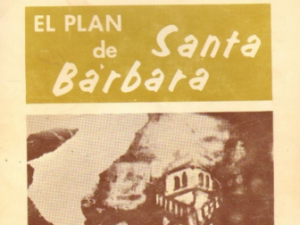In the late 1960s, so few other Latinos attended his college, Cástulo de la Rocha could find and personally call them all in a matter of days. And as a student activist in a growing Chicano Movement, he did just that.
“There was an ongoing debate at the time whether there were 20 or 40 or 50 Latinos here at that time,” recalled de la Rocha, then a student at UC Santa Barbara. “So I went to all the students one by one, by last name — Gómez, González, Martínez — all of them. Our number was small. Today the university is very different. Of more than 20,000 students on campus close to 30 percent are Latino, which is extraordinary.”
UC Santa Barbara now is one of two Hispanic-Serving Institutions in the prestigious Association of American Universities, a designation stipulating that Hispanic students comprise at least 25 percent of total enrollment.
And de la Rocha, alongside other passionate, vocal students, staff and faculty, played an important role in that evolution. During a time of widespread unrest over the Vietnam War, the Civil Rights Movement and more, he was a key figure at UC Santa Barbara in the Chicano Movement that was also then burgeoning on campuses nationwide.
Among its core priorities was a push for higher education to better reflect Chicano identities in student populations — and better represent Chicano history and culture in curricula and scholarship. Scoring on both fronts, the movement in 1969 notched a now-landmark achievement: El Plan de Santa Bárbara.
Click the link below to read the full article.
Related Link:
News Date:
Thursday, February 14, 2019
February 19, 2019 - 8:54am







